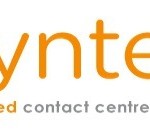 Contact Centre Real Time Reporting: Alex Cooksey of Syntec suggest ten simple ways in which real time reporting can help you ensure that your contact centre is working to maximum effectiveness.
Contact Centre Real Time Reporting: Alex Cooksey of Syntec suggest ten simple ways in which real time reporting can help you ensure that your contact centre is working to maximum effectiveness.

For additional information see the Syntec Website or view their Company Profile
 Contact Centre Real Time Reporting: Alex Cooksey of Syntec suggest ten simple ways in which real time reporting can help you ensure that your contact centre is working to maximum effectiveness.
Contact Centre Real Time Reporting: Alex Cooksey of Syntec suggest ten simple ways in which real time reporting can help you ensure that your contact centre is working to maximum effectiveness.



